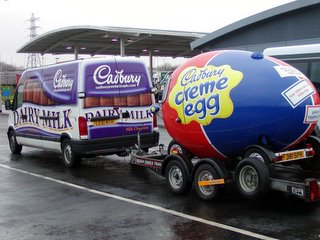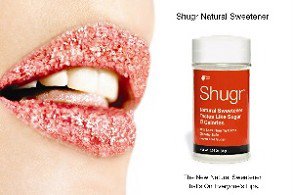Are these five stocks hidden gems?
It's not unusual for investors to shun stocks priced under ten bucks,
which in the minds of some suggests poor quality. But these five
companies, all profitable over the past 12 months, have posted
five-year sales growth of more than 5% (annualized), while analysts
expect their earnings to advance at a 10%--or better--clip for the
next three to five years. In addition, all these stocks show trailing
12-month price-to-earnings multiples below their five-year averages.
...
Bell Microproducts (nasdaq: BELM)
Cholestech (nasdaq: CTEC)
CyberSource (nasdaq: CYBS)
Encore Medical (nasdaq: ENMC)
Southern Community Financial (nasdaq: SCMF)
First off, I ran each of these tickers through CNBC's Stock Scouter. Each rated either a 3, 4, or 5, so dismal to merely mediocre.
Next, I checked each ticker on SmartMoney.com's competitive analysis screen to check out each company's numbers, and those of some of their competitors. This process quickly weeded out SCMF from further consideration, as numerous statistics lagged its competition, including its net profit margin, PEG, price/cash flow, and ROE/ROA/ROIC.
So let's do a quick run-through of the remaining four stock ideas.
ENMC is an Austin, Texas-based designer and manufacturer of orthopedic devices. Check out their site for some impressive graphics of implantable devices for the knee, hip, shoulder, and spine. If you click on the link, you can actually make a game out of trying to figure out which futuristic device is surgically inserted into which part of the body. But if you're too lazy to do that, here's the image below. The spine is the easiest to pick out.

ENMC trades at around $5.40, about 25% off its 52-week high. Attractive numbers from SmartMoney.com include its PEG, at .94, a Price/Cash Flow of 9.40, and 5-yr Sales Growth of 53.28%. However, ENMC's Net Profit Margin is a low 3.40% and its ROE is 4.80%.
Free cash flow, from Morningstar, has been positive and significant since 2001, with a hiccup in 2004: '01 6.1; '02 8.1; '03 8.1; '04 (5.5); TTM 10.3.
CTEC makes and markets diagnostic products that help assess the risk of heart disease, diabetes and certain liver diseases outside hospitals and laboratories. Its numbers aren't so lovely: Price/Cash Flow is 15.30, ROE is 10%, 5-yr Sales Growth is 9.52% and Net Profit Margin is 11.10%. The CEO, Warren E. Pinckert, has been selling shares: over 19K in October, 20K in September, and 12K in August.
Free cash flow has been mixed since 2000, but positive in the last year: '00 3.6; '01 (1.9); '02 3.6; '03 0.8; '04 (4.6); '05 7.1; TTM 9.3.
These mediocre-at-best numbers plus the significant insider selling makes me profoundly uncomfortable with continuing with CTEC.
BELM is hard to describe in one sententce, so here's what I pilfered off of their website:
BELM...is an international, value-added provider of a wide range of high-technology products, solutions, and services to the industrial and commercial markets. The Company's offering includes semiconductors, computer platforms, peripherals, and storage products of various types including desktop, high-end computer and storage subsystems, fibre channel connectivity products, RAID, NAS and SAN storage systems and back-up products. Bell Microproducts is an industry-recognized specialist in storage products and is one of the world's largest storage-centric value-added distributors.
SmartMoney calls BELM an electronics wholesaler. Its numbers shine against the industry competition, garnering top marks in 5-yr Sales Growth of 11.55%, a PEG of .89, and Price/Cash Flow of 11.00. Its ROE/ROA of 6.90%/1.80% lag, as have the stock's returns to investors over the last twelve months and three years.
Free cash flow has been mixed since 2000, and it plummeted in the last year: '00 (70.8); '01 24.2; '02 15.2; '03 (45.5); '04 15.1; TTM (47.6).
Finally, we have CYBS, which provides online commerce transaction processing services. Very sexy. This company trades at around $7.50 and has a market cap of around $250M. Its PEG, of 1.46 is not that attractive on its own, but compares nicely within the business software and services sector. The Net Profit Margin of 14.60% is solid, with a ROE/ROA of 13.90%/12.00%.
Free cash flow may look ugly, but the numbers have moved in the right direction year after year: '00 (60.3); '01 (30.1); '02 (8.6); '03 (5.0); '04 0.9; TTM 1.7.
I think we're left with three stocks worthy of more investigation. I guess the lesson for me here is top 5 or top 10 lists are neat little packages for magazines to publish. Some would say these lists are a crutch for the editorially lazy and uncreative. In fact, I say it. Why do you think I'm blogging about a top 5 list? I'm using a news crutch for a blog crutch. How meta.
Anyway, the real lesson: These lists can contain some crap. This one sure does. I know it's just a short piece based on a simple stock screen. Once the stock screen filters out the obvious garbage, it is then up to the Pig to sniff out the subtler refuse.
When it's time to start the portfolio, I'll revisit ENMC, BELM, and CYBS.
















